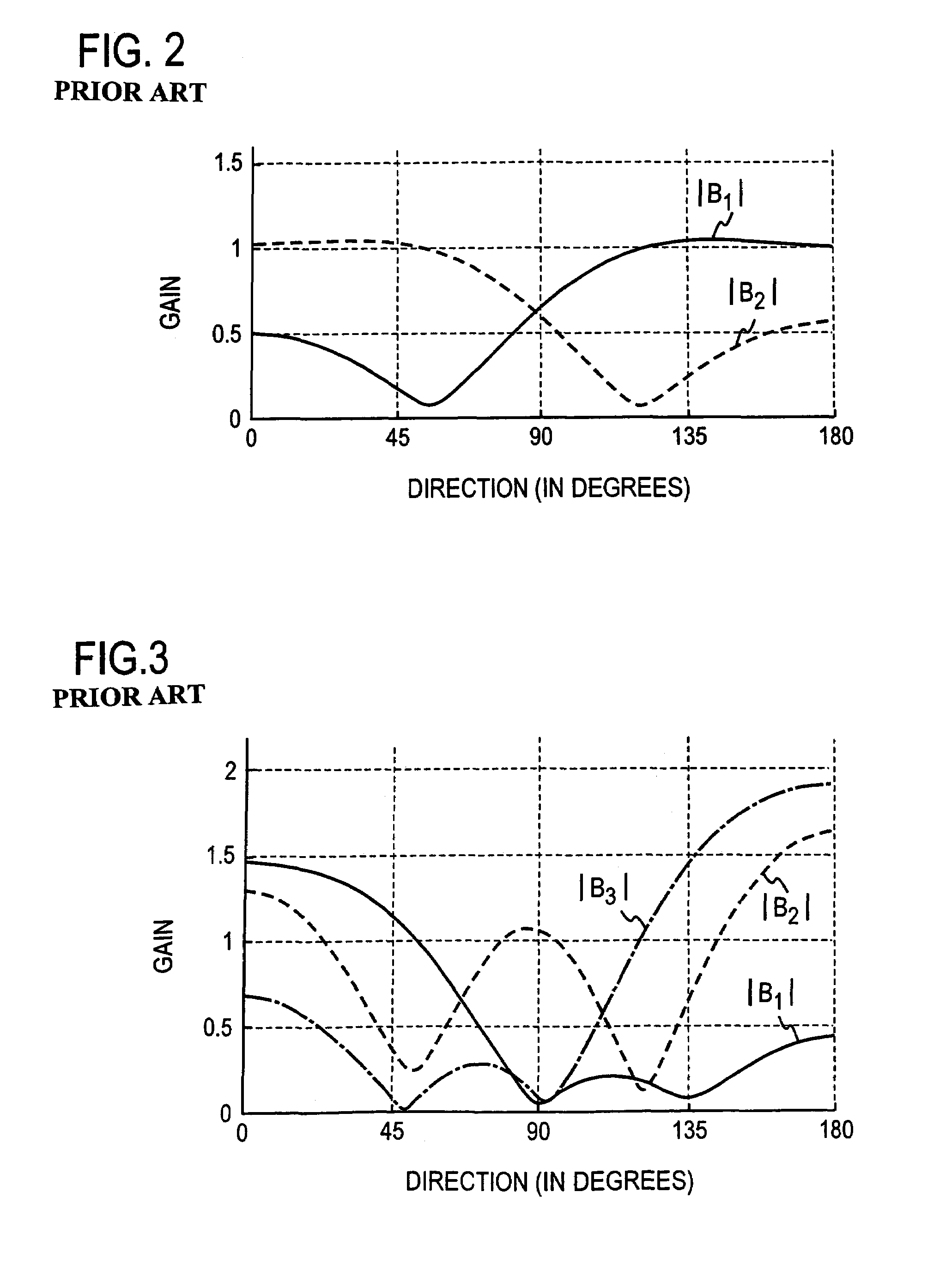Position information estimation device, method thereof, and program
a position information and estimation device technology, applied in direction finders using radio waves, multi-channel direction-finding systems using radio waves, instruments, etc., can solve problems such as scaling problems, arbitrariness in the sequence and magnitude of separated signals, and difficulty in accommodation for a mixture of three or more signals, so as to avoid the influence of scaling ambiguity and reduce the amount of calculation
- Summary
- Abstract
- Description
- Claims
- Application Information
AI Technical Summary
Benefits of technology
Problems solved by technology
Method used
Image
Examples
first embodiment
[0073]In this first embodiment, the direction of a signal source, or the arrival direction of a source signal which is radiated from the signal source is determined.
[0074]FIG. 5 shows a functional arrangement of the first embodiment, and FIG. 6 shows a flow chart of part of a processing procedure therefor.
[0075]J sensors 11, 12, . . . , 1J, which are equal to or greater in number than the number I of signal sources, are disposed in an array as shown in FIG. 1. A spacing between adjacent sensors is normally equal to or less than one-half the shortest wavelength of source signals. Signals x1(t) which are observed by the sensors 1j (j=1, 2, . . . , J) are transformed into frequency domain signals Xj(ω, m) as by short-time Fourier transform in respective frequency domain transformers 11j (step S1, FIG. 6). Separation matrices W(ωn) (n=1, 2, . . . , N) for each angular frequency ωn for these frequency domain signals Xj(ω, m) are calculated through the independent component analysis proce...
second embodiment
[0095]A second embodiment is directed to obtaining direction information which is one item of positional information of signal sources. According to the second embodiment, at least three sensors which are disposed in at least two dimensions are used to allow a direction of a signal source to be estimated wherever the signal source is directed, thus allowing the permutation problem involved with the blind signal separation to be solved in a relatively simple manner. Specifically, a conical surface which is based on direction information is estimated, and a straight line which is in common to a plurality of conical surfaces is estimated to determine direction information.
[0096]A functional arrangement of the second embodiment as applied to the blind signal separation system is shown in FIG. 12, and a processing procedure used therein is shown in FIG. 13. By way of example, four sensors 11, 12, 13 and 14 are disposed on a circle at an equal interval, which is chosen to be equal to or l...
third embodiment
[0125]In a third embodiment, a curved surface on which a signal source exists is used as positional information which is based on the ratio of distances between a pair of sensors and a single signal source. In the first and the second embodiment, an assumption is made that signal sources are located remotely from sensors, and accordingly, signals from the signal sources are oncoming as plane waves to the sensors. However, when distances between signal sources and sensors are relatively short, a signal is oncoming as a spherical wave to a sensor. In view of this, when a ratio Aji(ω) / Aj′i(ω) of elements of a mixing matrix A(ω) is interpreted according to a spherical wave (close distance field) model, information other than the direction of a signal source i can be estimated.
[0126]Specifically, using a close distance field model, a frequency response Aji(ω) can be expressed as follows:
Aji(ω)=(1 / ∥qi−dj∥)exp(jωc−1(∥qi−dj∥))
where qi is a vector indicating the position of a signal source i...
PUM
 Login to View More
Login to View More Abstract
Description
Claims
Application Information
 Login to View More
Login to View More - R&D
- Intellectual Property
- Life Sciences
- Materials
- Tech Scout
- Unparalleled Data Quality
- Higher Quality Content
- 60% Fewer Hallucinations
Browse by: Latest US Patents, China's latest patents, Technical Efficacy Thesaurus, Application Domain, Technology Topic, Popular Technical Reports.
© 2025 PatSnap. All rights reserved.Legal|Privacy policy|Modern Slavery Act Transparency Statement|Sitemap|About US| Contact US: help@patsnap.com



